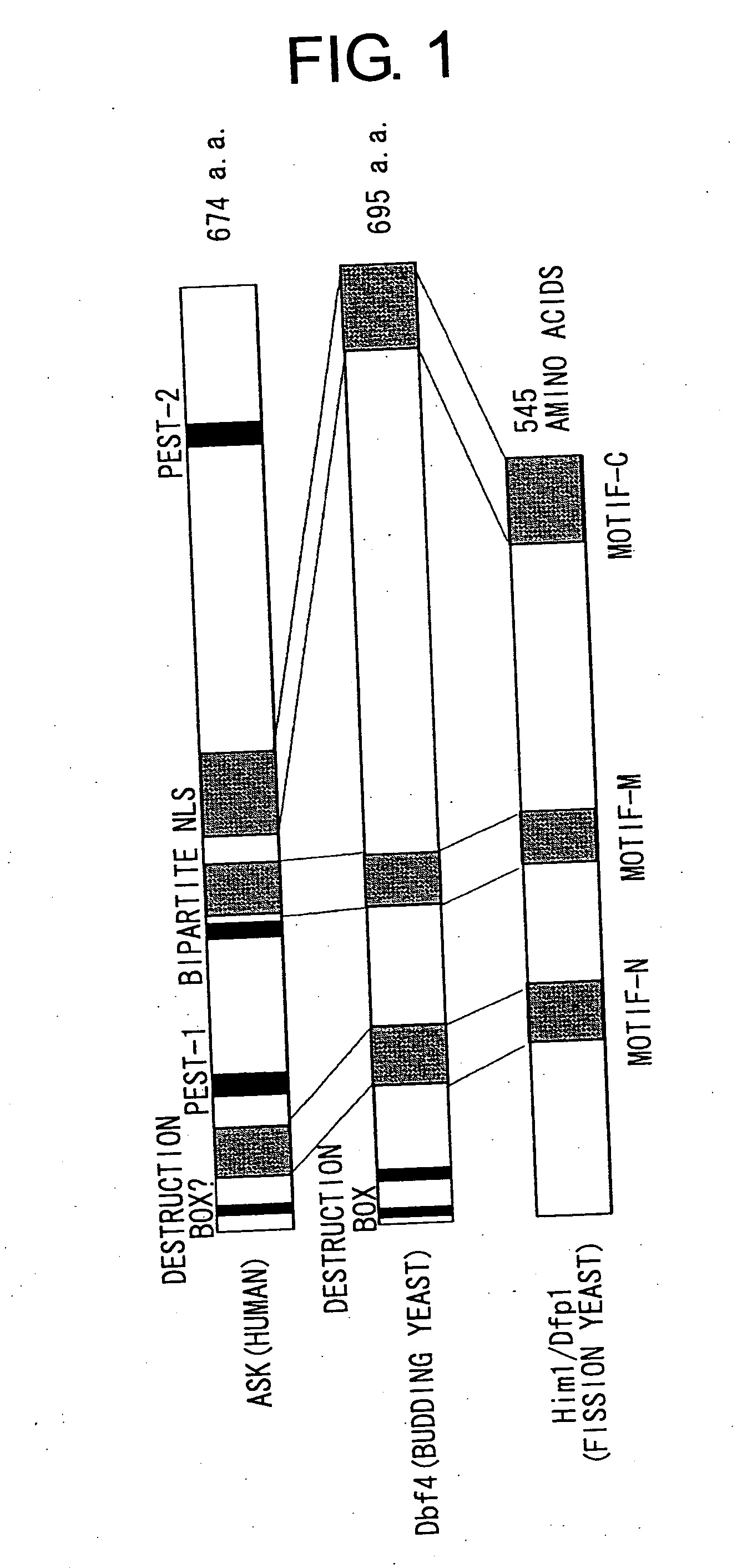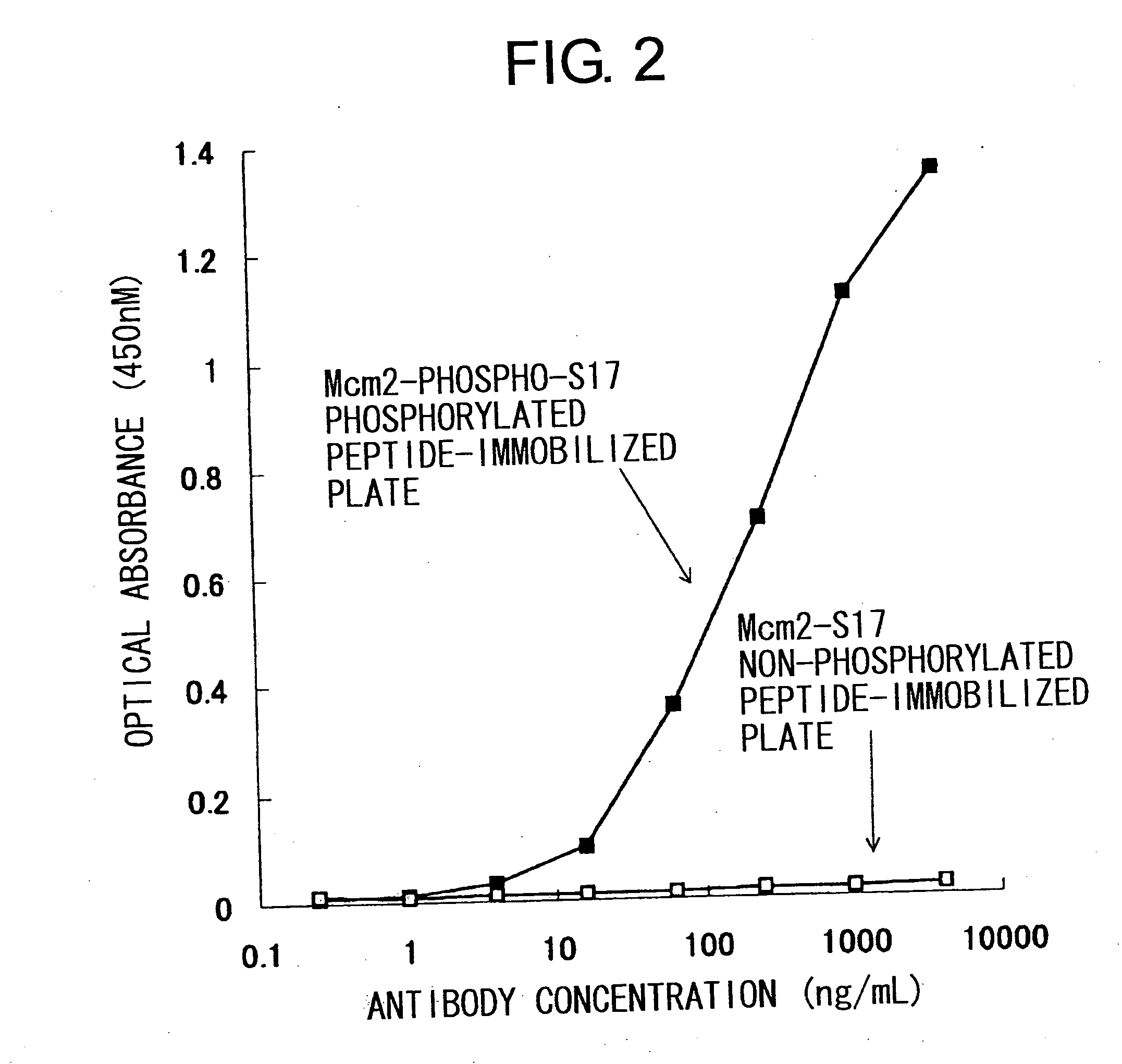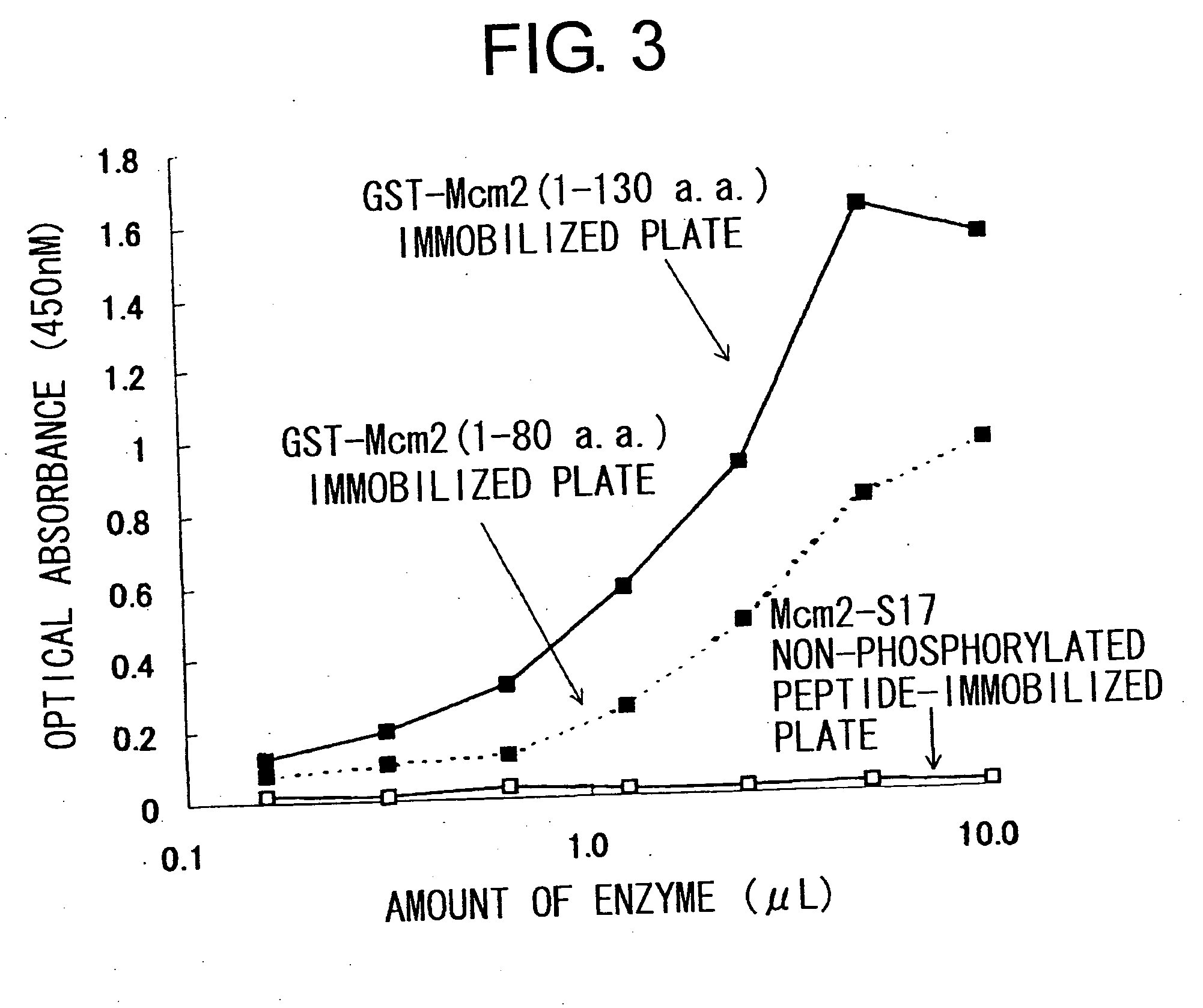Cdc7-ask kinase complex, substrates of the kinase complex, antibody specific to the substrate, and method of screening compound capable of inhibiting cdc7-ask kinase using the same
a kinase complex and cdc7 technology, applied in the direction of transferases, instruments, drug compositions, etc., can solve the problems of difficult obtaining a molecule that specifically and selectively acts on cancer cells by targeting cdk-cyclin, and achieve the effect of promoting the kinase activity of a cdc7-ask complex active substan
- Summary
- Abstract
- Description
- Claims
- Application Information
AI Technical Summary
Benefits of technology
Problems solved by technology
Method used
Image
Examples
example 1
Identification of ASK Activity Domain
[0181] The present inventors conducted detailed mutation analyses using fission yeast Hsk1-Him1 / Dfp1 as a material. As a result, the present inventors reported that the presence of only Dbf4-motif-m and Dbf4-motif-C is sufficient for kinase activation (Ogino, K. et al., J. Biol. Chem. 276: 31376-31387, 2001). Fission yeast Hsk1-Him1 / Dfp1 is a complex that corresponds to human Cdc7-Dbf4. On the basis of this fact, the present inventors predicted that a minimum domain comprising only motif-M and motif-C would be also be adequate for kinase activation in human ASK. FIG. 1 shows the results of comparing the arrangement of motif-M and motif-C in human ASK, budding yeast Dbf4, and fission yeast Him1 / Cfp1.
[0182] More specifically, an amino acid sequence corresponding to the 173rd to 349th residue (SEQ ID NO: 10) was selected from the amino acid sequence of human ASK, shown in SEQ ID NO: 9. The DNA encoding this region is precisely divided at introns. ...
example 2
Vector for Expression of Cdc7-ASK Complex Active Substance
[0183] A plasmid designated as GST-TAT-ASK(minimum)-HA-huCdc7 was prepared in order to express the active domains of human Cdc7 and ASK in E. coli. First, a GST-TAT-ASK-fused protein expression vector, GST-TAT11, was prepared. A restriction enzyme site (NotI) was then inserted downstream of ASK, and HA-Cdc7 was inserted at this site. At this time, a ribosome binding sequence (RBS; Shine-Dalgano sequence) was added immediately in front of the HA-Cdc7. Due to the addition of this potent RBS, the section from GST-TAT-ASK to HA-Cdc7 was transcribed as one sequence, and both proteins could be efficiently translated from a single transcription product. This detailed procedure is described below:
[0184] A region that encodes from the 173rd to the 349th amino acid of the cDNA of human ASK was amplified by PCR using the two primers below:
Minimum ASK-N (HindIII):CCC AAG CTT GAC ATT AGA TAC TAC(SEQ ID NO: 11)ATT GAA;andMinimum ASK-C ...
example 3
Expression and Purification of Cdc7-ASK Complex Active Substance in Bacteria
[0189]E. coli C6001on- was transformed with the vector GST-TAT-ASK (minimum)-HA-huCdc7, constructed in Example 2 above, in accordance with ordinary methods. C6001on- is a strain of E. coli that is missing 1on, which is a major E. coli protease.
[0190] The transformed E. coli was inoculated into 200 ml of LB medium containing 40 μg / ml of ampicillin, and cultured at 37° C. When the OD600 of the culture medium reached 0.5, IPTG was added at a concentration of 1 mM, and then cultured for an additional three hours. The bacteria were collected by centrifugation, washed, and then suspended in 20 ml of buffer A (40 mM Hepes / KOH (pH 7.6), 1 mM EDTA, 40 mM potassium glutamate, 10% glycerol, and 1 mM DTT). The cells were disrupted using ultrasonic treatment, and the resulting products were fractionated into a soluble fraction and a precipitate (insoluble fraction) by centrifugation. 1 ml of glutathione Sepharose 4B wa...
PUM
| Property | Measurement | Unit |
|---|---|---|
| pH | aaaaa | aaaaa |
| max-width | aaaaa | aaaaa |
| concentration | aaaaa | aaaaa |
Abstract
Description
Claims
Application Information
 Login to View More
Login to View More - R&D
- Intellectual Property
- Life Sciences
- Materials
- Tech Scout
- Unparalleled Data Quality
- Higher Quality Content
- 60% Fewer Hallucinations
Browse by: Latest US Patents, China's latest patents, Technical Efficacy Thesaurus, Application Domain, Technology Topic, Popular Technical Reports.
© 2025 PatSnap. All rights reserved.Legal|Privacy policy|Modern Slavery Act Transparency Statement|Sitemap|About US| Contact US: help@patsnap.com



